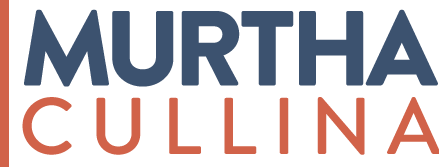June 23, 2020
On Wednesday, June 17, 2020, the SBA and U.S. Treasury released a revised loan forgiveness application for the Paycheck Protection Program (the “PPP”) and unveiled a new EZ application for forgiveness of PPP loans. In addition, on Friday, June 19, 2020, the SBA released a revised interim final rule that implements changes pursuant to the Paycheck Protection Program Flexibility Act (the “Flexibility Act”).
Highlights to the revised loan forgiveness application include:
- Borrowers that received loans prior to June 5, 2020 can choose between using the original 8-week covered period or the new 24-week covered period.
COMMENT: Borrowers using the 24-week covered period may also use the Alternative Covered Period, which is the 24-week period beginning on the first day of the first pay period after the PPP loan disbursement date. There is no option to choose a covered forgiveness period in between the 8-week and 24-week covered periods. Therefore, a borrower choosing the 24-week covered period must measure headcount and salary/wage reductions during the entire 24-week period even if the borrower has exhausted the PPP funds before the 24-week period expires. This could result in a borrower losing a portion of the forgiveness amount if the borrower experiences a reduction in headcount and/or salary or wages after spending all of the PPP funds but before the 24-week covered period expires.
- The cap on salary/wages payable to employees (excluding owner-employees) for which PPP loan forgiveness is permitted has been increased to $46,154 (24/52 of a $100,000 annual salary) for borrowers who choose to utilize the 24-week covered period. In addition, the cap for payments to owners (owner-employees, self-employed individuals, or general partners) is increased. Borrowers using the 24-week covered period may seek forgiveness for up to the lesser of (i) $20,833 (2.5 months of a $100,000 annual salary) or (ii) 2.5/12 multiplied by the owner’s 2019 applicable compensation.
- Safe harbors for recapturing salary/hourly wage reductions and reductions in the number of employees from loan forgiveness reductions can be applied as of the date the loan forgiveness application is submitted. The safe harbor date for restoring payroll and/or headcount is now the earlier of (i) December 31, 2020, or (ii) the date of the forgiveness application. Borrowers do not have to wait until December 31 to apply for forgiveness to use the safe harbors.
- Health insurance costs for self-employed individuals, general partners and S corporation owners cannot be included in calculating payroll costs but retirement costs of S corporation owners (but not self-employed individuals and general partners) are eligible costs.
The revised loan forgiveness application can be found here and its instructions can be found here.
Highlights to the new EZ application include:
- The new EZ application form is a simplified version of the revised standard PPP forgiveness application and requires fewer calculations and less documentation than the revised standard forgiveness application. Borrowers are still required to keep all back-up documentation evidencing the payments for which forgiveness is being sought, including, among other items, payroll records, leasing agreements, and utility bills. The EZ application may be submitted to the PPP lender electronically.
- The EZ application can only be used by borrowers that:
- Are self-employed and have no employees;
- Did not reduce the salaries or wages of their employees by more than 25% and did not reduce the number or hours of their employees; or
- Were unable to operate during the relevant covered period at the same level of business activity as before February 15, 2020 due to compliance with COVID-19 related safety regulations and did not reduce the salaries or wages of their employees by more than 25%.
“Employees” include only those employees that did not receive, during any single pay period during 2019, salary or wages at an annualized rate of pay in the amount of more than $100,000.
COMMENT: No guidance has been issued regarding how borrowers should measure business activity before and after February 15, 2020 to satisfy the third option for using the EZ application.
The new EZ application can be found here and its instructions can be found here.
New SBA Interim Final Rule
The new SBA interim final rule released June 19, 2020, includes, among other items, several updates to prior interim final rules to reflect the passage of the Flexibility Act. Highlights include:
- The portion of PPP funds that must be used on payroll to qualify for full forgiveness drops to 60% from 75%.
COMMENT: In an important change from the Flexibility Act, the new interim final rule provides that a borrower who uses less than 60% of the PPP loan amount for payroll costs during the relevant covered period will continue to be eligible for partial loan forgiveness.
- As noted above, the new interim final rule increases the cap on individual employees’ salaries from $15,385 during the 8-week covered period to $46,154 during the 24-week covered period. The rule also increases the cap on owner compensation from $15,835 during the 8-week covered period, to $20,833 for a 24-week covered period.
COMMENT: These increases in the amount of allowable compensation expenses should increase the likelihood that borrowers will meet the 60% payroll cost requirement and receive full forgiveness of their PPP loans.
- The minimum term for PPP loans is raised to 5 years for loans made on or after June 5. For loans made before June 5, the 2-year maturity remains in effect unless both the borrower and the lender agree to extend it to 5 years.
- The amount of loan forgiveness can be up to the full amount of the loan plus accrued interest.
- The PPP application deadline remains June 30, 2020.
The new PPP EZ loan forgiveness application, the shortened revised standard PPP loan forgiveness application and newly issued interim final rule provide much welcomed changes and clarity regarding the PPP loan forgiveness rules but questions still remain.
![]() tax_business_new_ppp_forgiveness_applications_and_interim_rule_released.pdf
tax_business_new_ppp_forgiveness_applications_and_interim_rule_released.pdf

